Every day an average of 200,000 commuters pass through Toronto’s Union Station, Canada’s busiest passenger transportation hub. This sea of daily commuters is projected to increase to 2-3 times the 2006 levels of passenger traffic by the year 2031. Ironically, this commuter traffic is both an impetus for and an impediment of the Union Station Revitalization Project.
A joint venture between Metrolinx and The City of Toronto, the Union Station Revitalization Project began in 2010 to not only better accommodate Toronto’s current transportation needs, but also to increase its operations. Last month, OSPE had the pleasure of visiting Union Station to observe some of the structural and design changes taking place as a part of the Metrolinx Union Station Train Shed project. Exploring GO Transit’s platform 24/25, OSPE has the inside scoop on this $270 million venture.
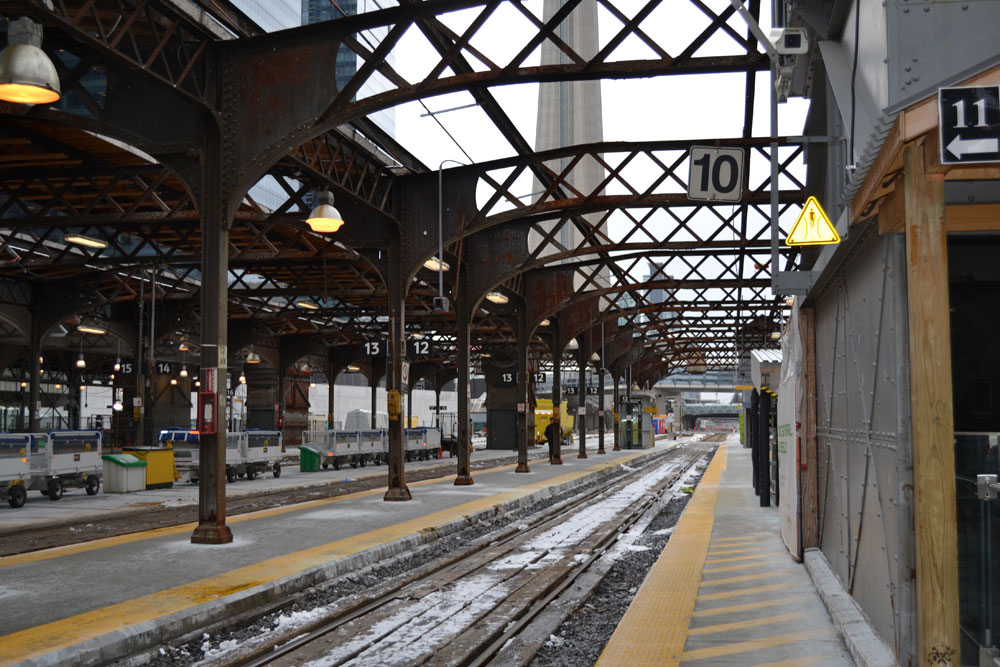
A designated heritage structure, Metrolinx has worked closely with Parks Canada and a heritage architect to make necessary updates to the station, while preserving its heritage character. Besides the practical issues that arise when renovating a station that is still in use, Union Station’s dated 1929 construction creates structural constraints that have required a great deal of innovation on the part of train shed’s contractor and two teams of consultants.
Union Station was originally designed for freight and intercity trains and was not intended to accommodate commuters. The original station featured a very low-profile and industrial design. Lesley Thompson, B.A.Sc., Manager of the Union Station Train Shed Project, who studied structural engineering at the University of Toronto, says that this cost-effective design explains the station’s former steel pan walls, low ceilings and dark interior.
“We have engineers from just about every discipline from structural to mechanical to electrical, working on this project to make changes that they couldn’t have imagined in the 1920s,” said Thompson. “Structural engineering has been a really significant component of the project. We are updating what is essentially an 80-year old bridge, so structural modelling and analysis permits various processes like cutting new openings into the concrete slab that supports the trains.”
Thompson explains that the biggest challenge is that the station’s platforms are not as wide as the team would like. The positioning of the station’s columns prevents the platforms from being moved, so structural engineers have had to make the most strategic use of the station’s limited space to create an environment that safely accommodates commuters. Some inventive solutions to improve passenger access to the station have included the construction of new passenger stairwells and elevators inside what were once operational freight elevator shafts.
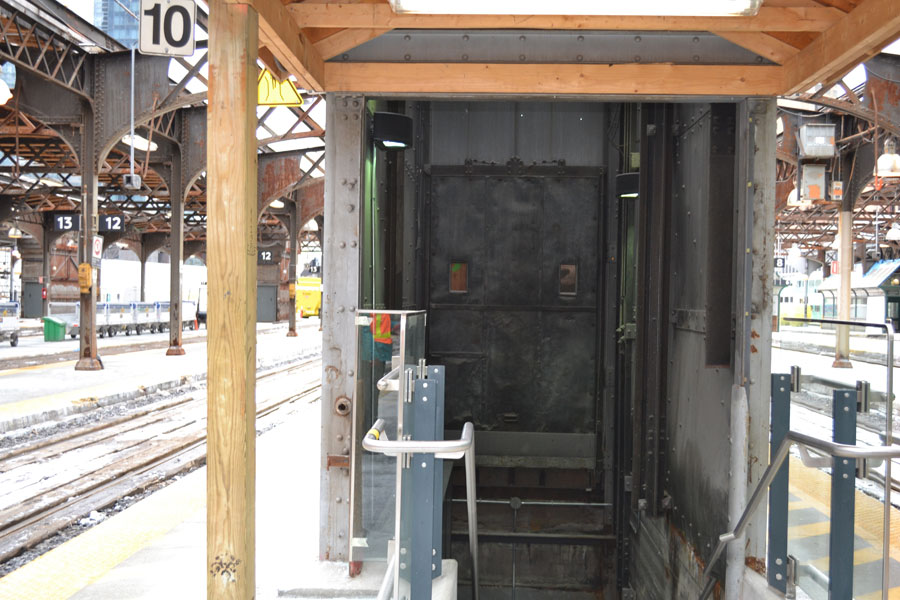

Although many of the station’s original steel pan walls have been replaced with glass to allow more natural light, several platform walls will remain original to the 1929 structure. These feature copper flashing to match the original as well as many of the building’s original wired glass panes.
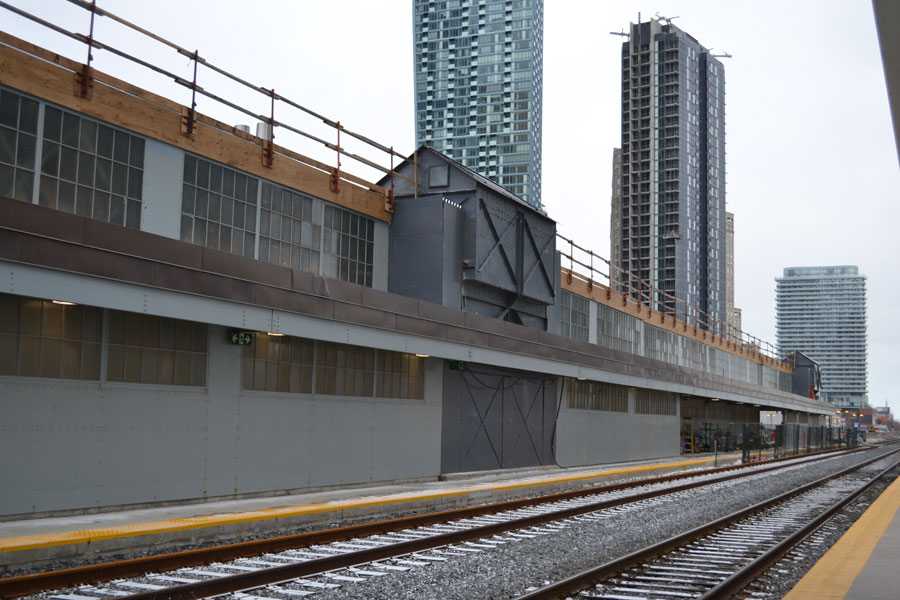
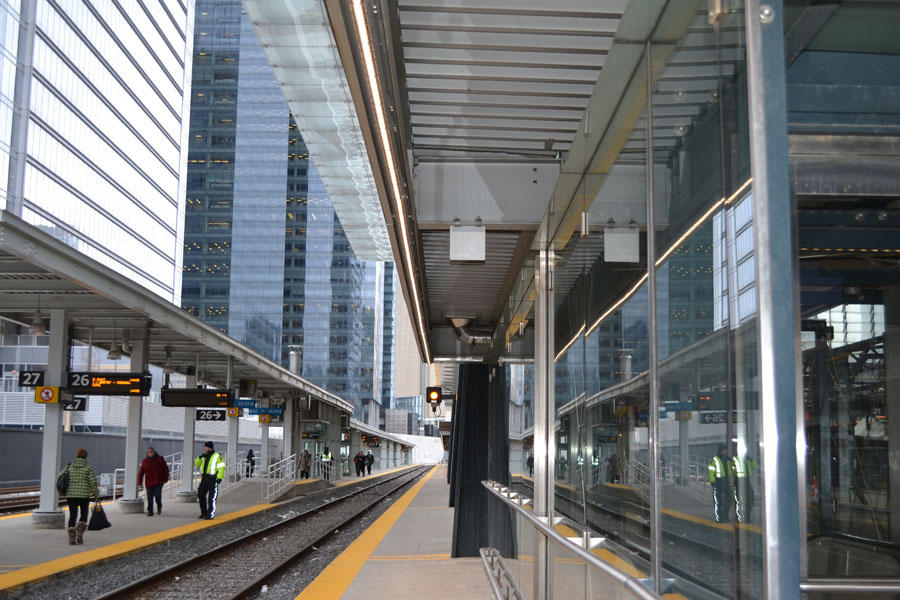
One of the most prominent updates to the Union Station train shed is the construction of 5,000 square-metre glass atrium that has replaced the central area of the shed’s 35,000 square-metre roof. “The old train shed had a solid wooden roof supported by steel trusses,” said Thompson. “The new glass atrium, on the other hand, creates a soaring, open space that brightens up the station.” Thompson notes that the steel structure is in surprisingly good condition, so this heritage steel will be maintained at both the east and west ends of the shed.

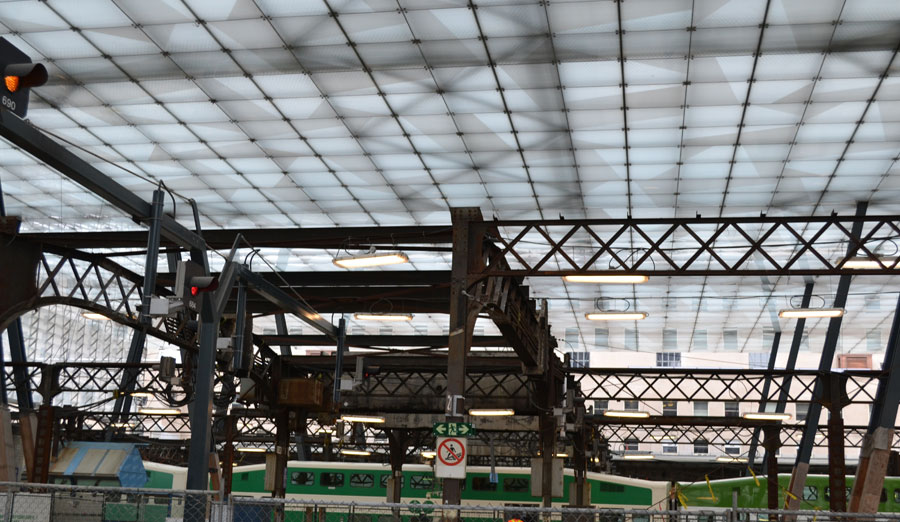
The new roof will also feature “an environmentally friendly green roof to reduce the ‘heat island’ effect that raises temperatures in urban areas and to reduce the concentration of rainwater run-off.” Thompson explains that the station’s waterproofing was as old as the 80-year old structure itself, so it has been another necessary update.
Track technology is one area that has not changed significantly in 80 years, however, so any track-level changes have simply involved the replacement of parts in need of a quality update. To create the fewest service disruptions, the revitalization team contains track work by removing and replacing only two tracks at a time.
The Union Station Train Shed Project is a prime example that engineering prowess and ingenuity does not always mean creating the next unforeseen innovation; it also means finding the most inventive and strategic ways to solve existing problems, even in the face of logistical constraints.






No mention of what has to be done structurally to permit electrification of the GO trains operating on ALL (?) the Metrolinx lines.
Did I see a recent TorStar – or G.&.M. – article about it being too expensive to raise ALL the columns in the rail shed to permit the installation of the traction power cable overhead, and that they may have to lower the foundations under ALL the rail tracks ?
Shouldn’t this have been done first ?
Hi Peter – Thank you for sharing your comments. The Metrolinx team has expressed that they are more than happy to answer your questions. For the most accurate response to your inquiry, feel free to reach out to Metrolinx directly at https://secure.metrolinx.com/secure/en/contactus/.